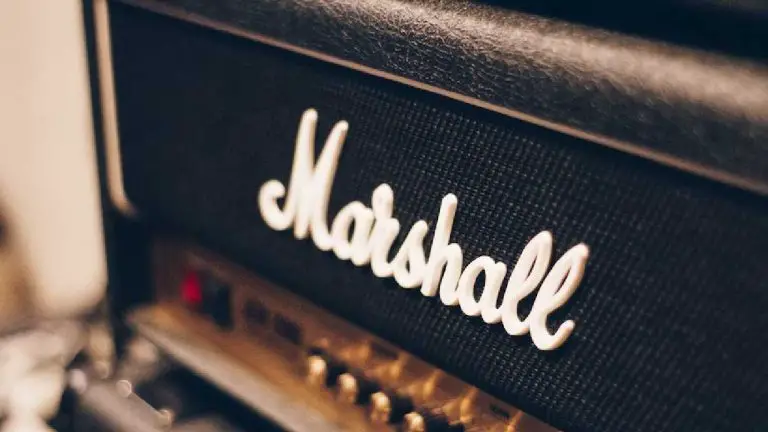What is The Best Tape Delay Pedal for You?
You may be a bit nervous about your performance onstage with a guitar, but do you know that there are supporting tools willing to help you out? And even if you are a professional, it does not hurt to put in some extra assistance.
So what do we have in store for you today?
Tada, welcome to a tape delay pedal. It is an echo processor that promises to rock the stage by adding multiple effects to your sounding. Not only is it cheap, but it is also excellent for solo performances.
But are you aware of the magic behind a tape delay pedal? Why is it among the most favorite musical tools, and how can you make the best out of it? Let’s check out our article below to solve these mysteries!
In hurry? Here is our choice.
5 Best Tape Delay Pedal Reviews
Things You Need To Know About Tape Delay Pedals
What exactly is a tape delay pedal?
A tape delay pedal shares a common feature with all other pedals: it can create an echo. But there lies a unique feature that only belongs to a tape delay pedal.
What is it, then? It is the fact that a tape delay pedal relies on an analog recording tape to maximize the quality of a reverb. In the past, analog delay pedals were made with the help of a tape machine.
This approach resulted in a satisfying sounding that musical tool-makers decided to invent a brand new pedal called a tape delay. This tape is supposed to run on the machine over and over again, so that guitarists do not have to adjust the pedal manually.
A tape delay pedal manages to maintain the raw, authentic sounding that belongs to the vintage guitars, and make sure you can achieve similar effects through its magnetic wiring.
What are the features of a tape delay pedal?
There are specific factors that contribute to the success of a tape delay pedal. Some of them are the repeat rate, the intensity and the echo volume.
- Repeat rate: Also known as the Echo Time or Delay Time, the repeat rate refers to the pedal’s ability to space out the echoes. Once you have played a note, it may take from one to a few seconds for it to be repeated.
The repeat rate of a tape delay pedal will monitor the length between the two sounds, and it makes sure you can achieve your intended purpose.
One popular technique employed by modern guitar players is called the “spaceship” sounding, when guitarists can adjust the repeat rate at different points.
- Intensity: Another name for this feature on a tape delay pedal is Sustain, which is all about the number of echoes produced at a time. A tape delay pedal makes use of a “feedback loop”, with one echo being amplified.
Once it is done, guitar players will notice the sound echoing back from seemingly very far away. This version of self-oscillation will definitely level up your guitar performance!
- Echo Volume: Another name for this feature on a tape delay pedal is Swell. Its function is to balance the signal of the original sound and the resulting echo.
What makes it stand out is the fact that a guitarist can decide whether or not he or she wants a warm sound. If such a lush effect is not desirable, Swell allows you to create a metal-like outcome.
Read more: What are the best delay pedals?
Tricks to use a tape delay pedal
Owning a digital delay pedal is one thing, but learning how to use it is the tricky part. You have to understand the characteristics of a tape delay pedal, then you can proceed to master the tape echo sounding.
- Filtered Repeats: There is a noticeable difference between a digital delay pedal and a tape delay pedal. While a digital pedal produces identical repeated sounds, a tape delay pedal makes certain adjustments to the echoes.
How can it achieve this effect? The secret lies in a tape pedal’s filters. The original sound will run through these filters, which reduces the unwanted noise and returns the echoes to its authentic quality.
Thanks to the thick and profuse sounding of a tape delay pedal, your song will feel more “real” with a touch of vintage vibes. Get ready to lull the audience, everyone!
- Chorusing Effect: You might not know this, but a tape delay pedal is a complicated and intricate design. With components such as capstans, rollers or spindles, it will be impossible to combine these factors using micro precision only.
But please do not regard this as an undesirable issue. The mismatching operation of the factors above will give out subtle variations of the sounding. As a result, the repeated sounding will enjoy some warbling, also known as the process in which your melody becomes deepened and more delicate.
- Tape Saturation: If you have ever tried recording something on a tape with an extremely high volume, you may notice a side-effect called the “tape saturation”. This happens when the tape’s capabilities are exceeded, producing a distorted sound.
While it can be off-putting for some artists, others find this feature warm and desirable. To achieve this effect, a tape delay pedal usually comes with an option allowing you to reach a high volume on purpose.
This way, guitar players can experience the “tape saturation” onstage, and enjoy the rich sounding during the process.
What is the difference between a reverb, an echo and a delay?
Ever since the beginning of this article, we have been talking about reverbs, echoes and delays. Is there any difference between these three terms? And which category does a tape delay pedal belong to?
Keep reading to find out more!
- Reverb: If you are about to play the guitar in a confined area, you may want to heat the atmosphere up with a touch of ambiance. This is the time when you need the reverb effect.
As the name indicates, a reverb refers to the effects associated with room-ambiance. You can achieve it easily by using a reverb pedal, which is another common musical tool.
- Echo: First emerged in the 1950s, echo is the pioneering term used to describe the repeated sounds. There used to be echo machines dedicated to producing such sounds, but their popularity died away.
Nowadays, echo machines are hard to come by. Music tool-makers has decided to add an “Echo effect” to delay pedals, so that modern artists can still take advantage of this feature.
- Delay: Have you ever tried shouting into a canyon, then sit back and enjoy the echoes going back? If you do, then maybe the delay effect is born to suit you.
A delay effect can monitor the time disparity between the original note and the resulting sound, which is why it is called “delay”. Each repeated sounding is discrete, which makes it crystal clear to hear while coupled with a guitar’s performance.
In Conclusion
In summary, we believe you should choose Wampler tape delay pedal if you want a product that truly lasts.
While it may cost a bit more than a Dunlop or a Catalinbread tape delay pedal, Wampler is of good value for money. The investment you put in will pay off when you bring this item onstage.
It may not have excessive features like a Strymon tape delay pedal, but a Wampler’s item enjoys the necessary features of any standard pedal. And the best part of all? Even the sounding can feel like it comes from an analog delay pedal.
We believe Wampler is an irresistible charm, and you will share our thought the moment you start using it!
If you think our article has come into handy, please share it around with your friends! It is 2020 and sharing is loving.



